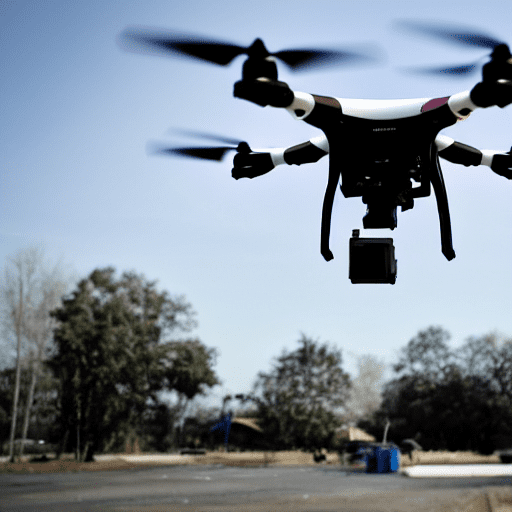
In recent years, the drone has become a popular gadget for hobbyists and photographers. These unmanned aerial vehicles are also increasingly being utilized by businesses in other industries as well as law enforcement agencies around the world. Whether flying over a forest to monitor wildlife or patrolling an outdoor prison complex, drones are an accessible and cost-effective addition to any police department. But how can drones improve law enforcement? What benefits might drones bring? And what implications do they have on police work? Keep reading to find out more.
Drones and police work
It’s important to first understand the context behind the rise of police drones. In recent years, the “war on crime” has become increasingly militarized, with heavily armed SWAT teams now used. With this in mind, drones provide a far more precise solution to law enforcement than the heavily armed vehicles. Rather than simply looking to arrest criminals and criminals, drones can be used to simply monitor suspicious activity. Beyond this, the rise in digital crime has prompted police forces to prioritize digital forensics and cybercrime investigation. And drones are providing a useful solution to help with this. For example, drones can be used to photograph crime scenes, collect DNA samples, and even be used to search remote areas for missing persons.
Monitoring and Surveillance
Drones can be utilized as a means of police surveillance and monitoring. A drone may be a more suitable choice for these tasks, particularly in areas that are difficult to access. For example, drones are often used for long-term surveillance at protests, where police may want to observe crowds without being noticed. They can also be useful for monitoring crowds in high-risk areas, such as at a sporting event where riot police are present. Drones can also be used to monitor areas where high-risk individuals are present, such as an open prison. In this scenario, a drone may record footage at regular intervals, which can then be used as evidence for future investigations.
Crime Detection and Evidence Gathering
Drones can be used to collect evidence at crime scenes. Depending on the type of drone and the type of camera used, police drones may be able to collect photographs and video footage during a crime scene investigation. This is particularly helpful in situations where the police cannot access the location on foot, such as a crime scene that is difficult to access due to hazardous weather conditions. They can even be used to assist in reconstructing a crime scene, which is particularly helpful in cases where investigators cannot access a crime scene due to weather conditions or danger. Drones can also be used to assist with police training and education. For example, the University of Texas at Austin Police Department uses drones to train their campus police in various aspects of police work.
Drone Features for Law Enforcement
The following are some of the key features of drones that make them useful for law enforcement.
Long flight times – Drones that are used for police work may need to stay in the air for several hours at a time. That’s why long-flight times are important when choosing a drone for police work, as they allow for longer patrols or surveillance.
Long-range cameras – Police drones may need to collect evidence from a distance, so they should have cameras with a long range. This allows the drone to stay outside of the range of potential suspects.
Durable Design – Law enforcement drones may be exposed to challenging weather conditions, potential damage, and potential collisions with wildlife.
All of these conditions may damage a drone, so police drones should be built to last. Drones for law enforcement should also be easy to operate and maintain. Police drones should be monitored using a software system that allows for easy customization and remote access.
Challenges for Police Drones
The challenges of using drones for law enforcement are often outweighed by their benefits. However, there are some challenges that police drones may face.
Privacy concerns – Drone technology continues to improve, and drones are becoming increasingly capable of collecting data. This may raise privacy concerns, as drones may be able to collect information that individuals would prefer to keep private. This can include data related to the home or vehicle.
Dangerous collision potential – Although law enforcement drones are typically used safely, they may present a danger to people if they collide with them. Police drones may also present a danger to wildlife, particularly if they are not used responsibly.
Police drone regulations – Another potential issue is the regulation of police drones. Currently, the federal government does not have a clear policy or regulations regarding the use of police drones. This may lead to confusion among law enforcement agencies about how to proceed.
Summing up Drones and Law enforcement
Drones are a growing part of police work, particularly in the United States. Police drones can be used for monitoring and surveillance, crime detection, and evidence gathering. Drones may be used to collect DNA samples, fingerprints, and photographs, as well as reconstruct crime scenes. They can also be used for training purposes and for general police surveillance. Drones for law enforcement are often equipped with long-flight times, long-range cameras, durable designs, and software systems. Challenges that police drones may face include privacy concerns, dangerous collision potential, and police drone regulations.
